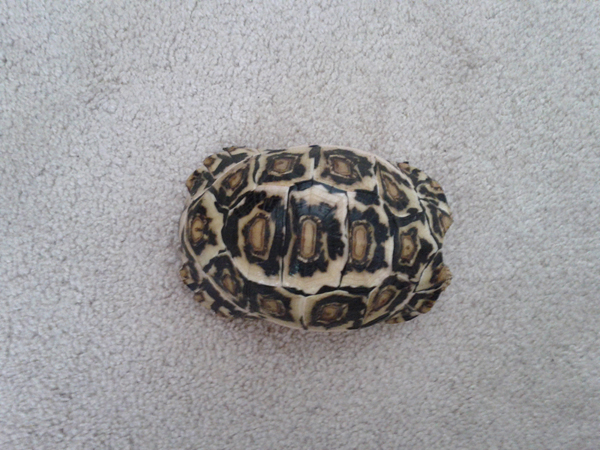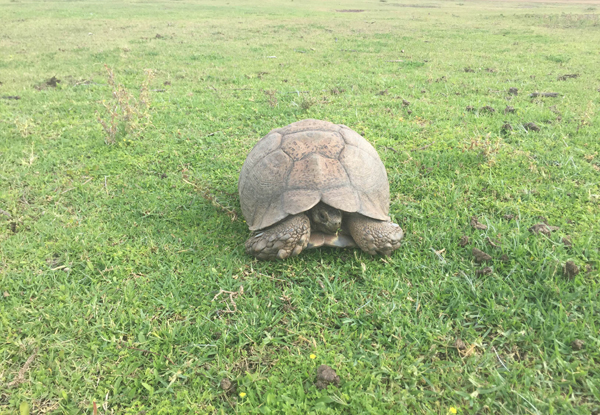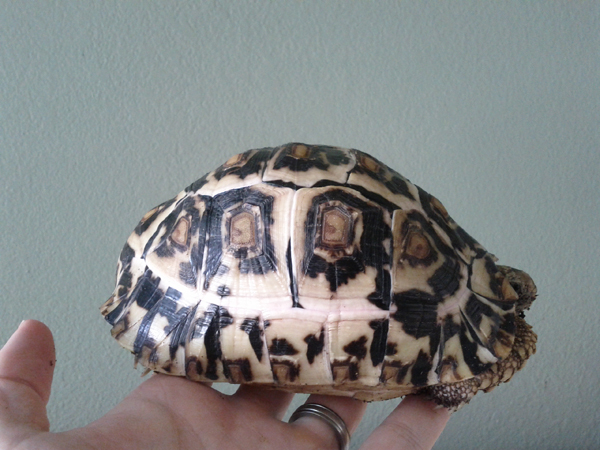Leopard Tortoise Myths
There are lots of myths out there about Leopard Tortoises that are raised in captivity. These myths are posted on popular tortoise forums, reputable tortoise websites and found in tortoise books all written by tortoise ‘experts’ who have many, many years of experience and feel that anyone who says different does not know what they are talking about. Here are several Leopard Tortoise myths that I read about as I was getting into raising them that just did not prove to be true or accurate. Detractors will say that my sample size is too small to be relevant and while I agree it is small, these aspects they hold to be absolutes are just not so based on my personal experience.
Here are 6 Leopard Tortoise Myths that Need to be Dispelled
Leopard Tortoise Myth #1
Raising Leopard Tortoises in high temperatures and humidity will cause them to be unnaturally ‘blond’ in color.
Here are my Leopards all of which are between 12 and 18 months old. As you can see I have a mix of what I would call ‘blond’ and ‘normal’ carapace coloration. Out of these eight on 2 are related on is ‘blond’ and the other is not.

My group of Leopard tortoises show variation in carapace coloration.
Leopard Tortoise Myth #2
Feeding Leopard Tortoises Mazuri Tortoise Diet will cause them to be ‘blond’.
This again is just not true. I feed Mazuri every day and it accounts for about 50% of my hatchlings diet. See photo above.
Leopard Tortoise Myth #3
If you grow them fast they will be ‘blond’.
Out of my herd, my fastest growing Leopard Tortoise reached 662 grams at 14 months of age and is not blond see image below.

Leopard Tortoise Myth #4
Leopard Tortoises are from dry arid regions.
Leopard Tortoises are the most widely spread tortoise species in Africa. Their range covers an enormous geographic range and are most readily found in grasslands which experience two seasons a wet season lasting about 5 months and a dry season which lasts about 7 months. And in South Africa they can be found in the high mountains that see a high rainfall wet season and low temperatures in the winter months. In fact they are also known as the ‘Mountain Tortoise’ in that country. Below is a photo of a wild Leopard tortoise feeding in pasture in South Africa. I would not call this a dry and arid region…would you?

Wild South African Leopard Tortoise found eating in a very green and grassy field. Image published with permission
Leopard Tortoise Myth #5
Raising Leopard Tortoises in humid environments will cause respiratory problems.
I have been raising my current eight hatchlings in an environment with at least 80% humidity for over one year and have not had one single respiratory problem… zero… none. However, let me be clear here, the enclosure must not be allowed to drop below 80 degrees Fahrenheit at any time day or night. Remember hot and humid make for a happy and smooth tort. Cold and wet makes for a sick tort.
Leopard Tortoise Myth #6
If they grow too fast that will cause their shell to pyramid.
Here are two Leopard Tortoises that reached 500 grams by 12 months of age. From everything that I’ve seen and read this growth rate is well above average for captive and wild specimens. As you can see there is no pyramiding that has developed. You can read more about pyramiding here.

500 grams at 12 months of age
Leopard Tortoise Myth #7
Leopard Tortoises do not drink water so you don’t need to provide a water dish for them.
This is 100% WRONG. Leopard Tortoises DO drink water. I have seen everyone of my Leopards drink. It is true that they are able to survive long periods with out water in the wild and they are able to extract water from the foods they eat, however both are a result of evolutionary survival. In captivity we do not know exactly what they do in the wild to conserve their body water supply. Do they become less active? Do they avoid direct sun? Do they seek specific food sources that will enable they to extract the maximum amount of water for survival? etc. etc. Since we don’t know the answers to these question nor can we replicate exactly what these animals go through in the wild it is best to provide fresh drinking water daily.

